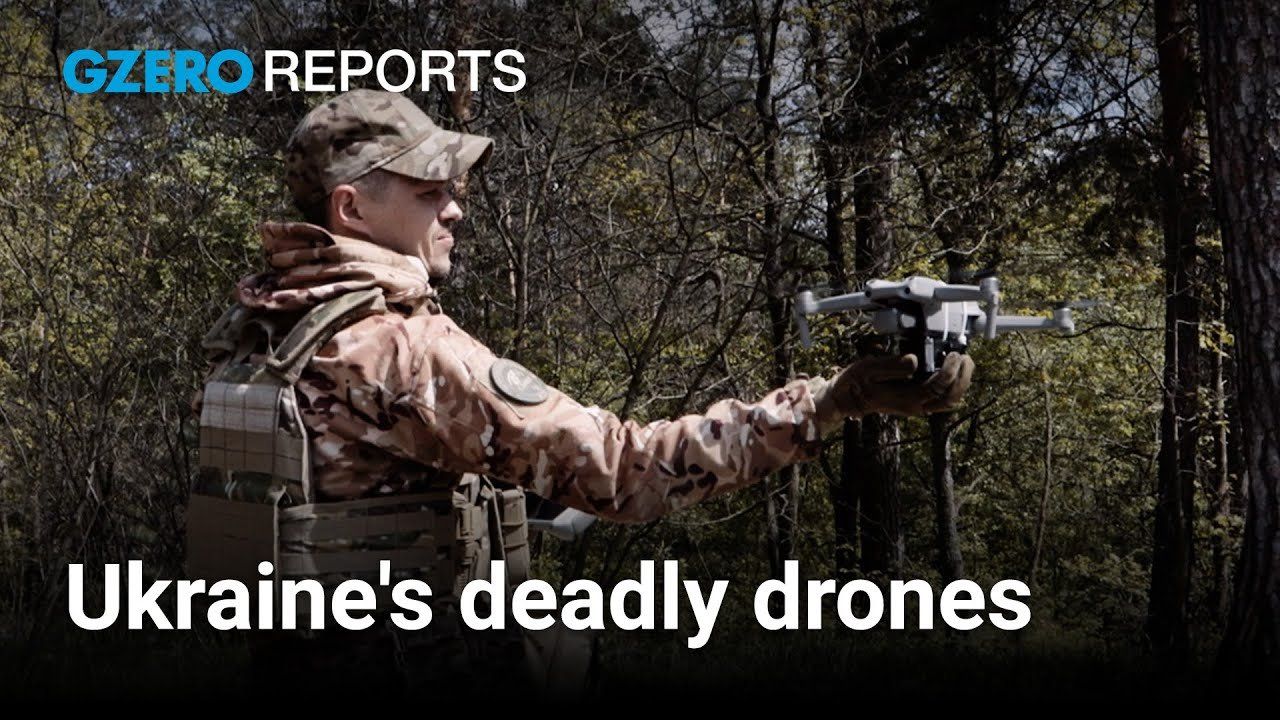GZERO Reports
How Ukrainians learn to pilot kamikaze drones that destroy tanks

How Ukrainians learn to pilot kamikaze drones that destroy tanks | GZERO World

First-person view (FPV) drones are cheap and effective on the battlefield in Ukraine, but the army urgently needs to train pilots how to fly them.
Over two years into Russia’s invasion of Ukraine, with ammo running low and ongoing military aid from the West at risk of drying up completely, the Ukrainian army is turning to a small piece of technology that’s having a surprisingly big impact on the battlefield: first person view (FPV drones), Alex Kliment reports for GZERO World with Ian Bremmer.
Originally invented for drone racing, FPVs have cameras that transmit what they “see” in real time to a pilot wearing goggles on the ground. FPVs are fast, hard to track and target, fit into spaces traditional artillery can’t, and can be fitted with explosives to use in kamaze-style attacks. Most importantly, they only cost around $500.
The biggest hurdle to scaling up Ukraine’s use of FPV drones is that they’re really hard to fly. So schools are opening nationwide to teach soldiers how to fly and incorporate them into battlefield tactics. Last fall, Adnan “Audi” Rana, a former marine who runs a non-profit called Aerial Relief Group, visited a drone school on the outskirts of Kyiv to check out the training program and see first-hand how well Ukraine’s efforts to incorporate the technology into its military is going. He found a DIY, ad-hoc effort run entirely by volunteers representing Ukraine’s best chance of holding back Russian troops until fresh military aid arrives from the West.
On Ian Explains, Ian Bremmer takes a look at the growing surge in global conflict and the ripple effects of so much violence, war, and armed struggle throughout the world.
Think you know what's going on around the world? Here's your chance to prove it.
The European Union just pulled off something that, a year ago, seemed politically impossible: it froze $247 billion in Russian central bank assets indefinitely, stripping the Kremlin of one of its most reliable pressure points.
Big global stories. Real conversations with world leaders. Our award-winning global affairs show, GZERO World with Ian Bremmer, goes beyond the headlines on the stories that matter most. Here’s a look back at the 10 most quotable moments from this year’s episodes.